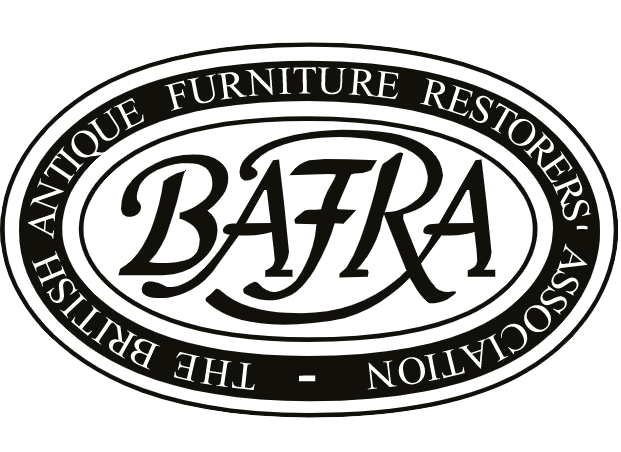
Antique Textiles Restoration & Repair by BAFRA Restorers
At BAFRA, we provide access to antique textile restoration and repair. Every member has been rigorously assessed and vetted. Our members are all established businesses that are fully accredited and work to the highest standards and ethics.
Antique Textile Restorers at BAFRA
Antique textile restoration is the process of repairing and preserving historical fabrics, including tapestries, garments, upholstery, and decorative pieces. Over time, textiles are vulnerable to damage from light exposure, humidity, pests, and handling, which can lead to fading, tearing, or deterioration of fibres. Restoration ensures these precious items are preserved for future generations while maintaining their historical and aesthetic significance.
The process begins with a thorough assessment of the textile’s condition, including identifying the type of fabric, its age, and the extent of damage. BAFRA restorers use specialised techniques to clean and repair the material, such as removing surface dirt and stains through gentle, non-invasive methods. Tears, holes, or weak areas are carefully stabilised using matching threads and fabrics, often employing hand-stitching techniques to ensure minimal interference with the original design. In some cases, damaged sections are reinforced with fine, sheer backing fabrics to provide structural support. BAFRA restorers also apply conservation-grade treatments to protect the textile from further deterioration, such as UV-blocking coatings or pest deterrents.
Antique textile restoration requires expertise, patience, and a deep respect for the craftsmanship of the past. Properly restored textiles regain their beauty and structural integrity, allowing them to be cherished for years to come.
Antique Textile Restoration FAQs
What types of textiles can be restored?
A wide range of textiles can be restored, including tapestries, vintage garments, rugs, quilts, lace, embroidered items, and upholstery. BAFRA restorers work with natural fabrics like silk, cotton, wool, and linen, as well as blends or early synthetic materials. Each type of textile requires specific techniques to address issues like fading, tears, or weakened fibres. Restoration not only repairs damage but also stabilises textiles, preserving their historical, aesthetic, and cultural significance.
How are antique textiles cleaned during restoration?
Cleaning antique textiles involves careful, non-invasive methods to avoid damaging the fragile material. Dry cleaning techniques like brushing and vacuuming with low suction are used to remove surface dirt. For deeper cleaning, textiles may be gently hand-washed using pH-neutral solutions and deionized water. Spot cleaning addresses stains, while advanced methods like solvent treatments are reserved for persistent marks. Every cleaning process is tailored to the fabric type and condition to preserve its original character.
Can tears or holes in antique textiles be repaired?
Yes, tears or holes in antique textiles can be repaired using meticulous techniques. BAFRA restorers stabilise the damaged areas by hand-stitching with conservation-grade threads that match the original in colour and texture. For larger holes, a sheer backing fabric may be added to provide additional support. These repairs aim to blend seamlessly with the textile’s design while maintaining its structural integrity. Every effort is made to preserve the original appearance and prevent further deterioration.
How is fading addressed in antique textile restoration?
Fading in antique textiles cannot be reversed, but measures can be taken to protect and preserve the remaining colours. BAFRA restorers may apply UV-blocking treatments to shield the fabric from further light damage. Proper display techniques, such as using low lighting and UV-filtered glass, can also reduce exposure. Additionally, our restorers focus on stabilising weakened areas caused by fading, ensuring the textile retains its structural integrity and can be safely displayed or stored.
How should antique textiles be stored after restoration?
Antique textiles should be stored in a clean, dry environment with stable temperature and humidity levels to prevent deterioration. Acid-free tissue paper can be used to wrap or pad the textile, preventing creasing or abrasion. Flat storage is ideal for most items, but rolled storage may be suitable for larger pieces like tapestries. Avoid direct sunlight, as UV rays can cause fading. Proper storage after restoration ensures the longevity and preservation of the textile’s beauty and integrity.
Why choose a BAFRA-accredited member to restore antique textiles?
Antique textile restoration requires expertise, precision, and knowledge of historical fabrics and techniques. BAFRA professionals use conservation-grade materials and reversible methods to ensure the original structure and appearance of the textile are preserved. They assess the specific needs of each piece and apply tailored solutions to prevent further deterioration. By choosing a BAFRA highly-skilled professional, you safeguard the historical, cultural, and aesthetic value of your textile, ensuring it can be enjoyed and appreciated for years to come.
Find BAFRA Accredited Antique Textiles Restoration & Repair Specialists
All accredited, full members are required to have at least five years as a conservation-restoration professional (the average member today has 23 years of experience) and pass an exacting assessment on their skills, knowledge and business credentials. Our members acknowledge the importance of continuous professional development to keep abreast of advances in knowledge, skills and technical developments in antique textile restoration and repair.
Find BAFRA-accredited antique textile restoration specialists near you by clicking the button below and entering your postcode.

